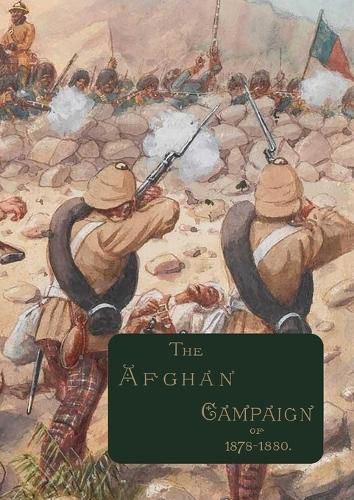Readings Newsletter
Become a Readings Member to make your shopping experience even easier.
Sign in or sign up for free!
You’re not far away from qualifying for FREE standard shipping within Australia
You’ve qualified for FREE standard shipping within Australia
The cart is loading…






This title is printed to order. This book may have been self-published. If so, we cannot guarantee the quality of the content. In the main most books will have gone through the editing process however some may not. We therefore suggest that you be aware of this before ordering this book. If in doubt check either the author or publisher’s details as we are unable to accept any returns unless they are faulty. Please contact us if you have any questions.
Comprising historical and biographical divisions, and containing a rapid sketch of the war, maps illustrating the operations and the movements of the forces, 140 facsimile Woodburytype photographs of officers who lost their lives in the campaigns and recipients of the Victoria Cross, with memoirs prepared from materials furnished by their relations and surviving comrades, summaries of the movements in the field of the various regiments which were engaged, and separate records of the services of every British officer who was employed in the war. In 1878-80, British-Indian forces fought a war to ensure that Afghanistan remained free from Russian interference. Although the campaign was eventually brought to a successful conclusion, the British suffered several setbacks in their struggle to control the volatile country.Throughout the 19th century, the British Government was convinced that the extension of Russian influence over Central Asia constituted a real threat to its Indian domains. This had led Britain to first invade Afghanistan in 1839, with disastrous consequences.In 1876, the spectre of Russian interference appeared once more when the Emir of Afghanistan, Sher Ali, was visited by a Russian diplomatic mission. When he then refused to accept a British envoy, the Viceroy of India, Lord Lytton, decided to act. The war was fought as part of Britain's 'Great Game' with Russia for influence in the traditionally turbulent wilds of Afghanistan.The British left Afghanistan in the hands of Abdur Rahman, who agreed to conduct his foreign policy through the Government of India. They also seized several Afghan districts in the Khyber and Kurram border areas. However, the provocative policy of maintaining a British resident in Kabul was quietly dropped. The last British and Indian soldiers left the country in April 1881.
$9.00 standard shipping within Australia
FREE standard shipping within Australia for orders over $100.00
Express & International shipping calculated at checkout
This title is printed to order. This book may have been self-published. If so, we cannot guarantee the quality of the content. In the main most books will have gone through the editing process however some may not. We therefore suggest that you be aware of this before ordering this book. If in doubt check either the author or publisher’s details as we are unable to accept any returns unless they are faulty. Please contact us if you have any questions.
Comprising historical and biographical divisions, and containing a rapid sketch of the war, maps illustrating the operations and the movements of the forces, 140 facsimile Woodburytype photographs of officers who lost their lives in the campaigns and recipients of the Victoria Cross, with memoirs prepared from materials furnished by their relations and surviving comrades, summaries of the movements in the field of the various regiments which were engaged, and separate records of the services of every British officer who was employed in the war. In 1878-80, British-Indian forces fought a war to ensure that Afghanistan remained free from Russian interference. Although the campaign was eventually brought to a successful conclusion, the British suffered several setbacks in their struggle to control the volatile country.Throughout the 19th century, the British Government was convinced that the extension of Russian influence over Central Asia constituted a real threat to its Indian domains. This had led Britain to first invade Afghanistan in 1839, with disastrous consequences.In 1876, the spectre of Russian interference appeared once more when the Emir of Afghanistan, Sher Ali, was visited by a Russian diplomatic mission. When he then refused to accept a British envoy, the Viceroy of India, Lord Lytton, decided to act. The war was fought as part of Britain's 'Great Game' with Russia for influence in the traditionally turbulent wilds of Afghanistan.The British left Afghanistan in the hands of Abdur Rahman, who agreed to conduct his foreign policy through the Government of India. They also seized several Afghan districts in the Khyber and Kurram border areas. However, the provocative policy of maintaining a British resident in Kabul was quietly dropped. The last British and Indian soldiers left the country in April 1881.